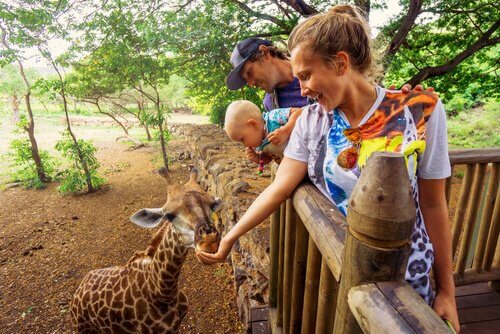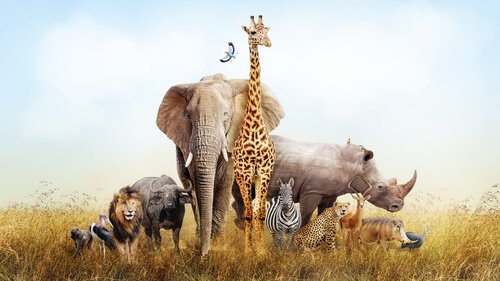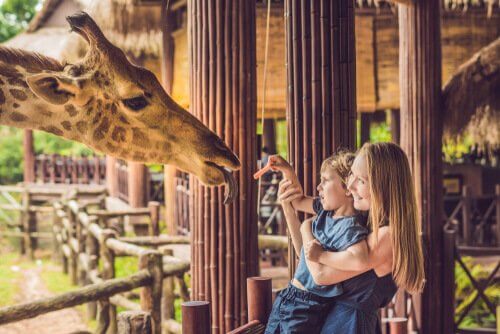Feeding Animals at the Zoo Could Poison Them
Feeding animals at the zoo could be harmful to them because their body is not adapted to human food due to the spices, added sugars, added sodium, and other additives.

Anyone who’s ever been to a zoo is familiar with the “no feeding the animals” signs. However, many of us have probably wondered if it really is so dangerous to share some of our treats with them.
The act of feeding animals may seem innocuous. The lovely creatures make us feel sorry for them and we don’t want to deny them a piece of our sandwich or cookie when they would clearly love it. However, we must understand that feeding them is a risk to their health.
Why is feeding animals at the zoo dangerous?
Logically, not all human foods are bad for animals. For example, there are many species that also consume fruits, vegetables or cereals to supplement their diet.

Highly processed, spicy, and fried foods, as well as sausages and sugary drinks are not recommended and can be toxic to animals (and also humans!) The same applies to alcohol and many other products that we use on a daily basis.
Chocolate as an example
Chocolate is one of the most popular foods in the world today, and it comes in many varieties.
However, chocolate may be a cause of heartburn in some because its main ingredient, theobromine, may affect the esophageal sphincter muscle in such a way that it permits stomach acids to enter the esophagus.
Theobromine poisoning is a relatively common occurrence in domestic animals.
In any case, a daily intake of between 2 and 4 ounces of cocoa by humans can cause sweating, trembling and severe headache. This is because chocolate contains alkaloids such as theobromine and phenethylamine. These have physiological effects in humans, but can affect dogs and cats even more.
Consequently, the consumption of chocolate -even in small doses- can cause undesirable adverse effects in animals. The most frequent consequences are digestive disorders, vomiting, and diarrhea, which usually appear a few hours after ingestion.

Tachycardia and behavioral changes, such as hyperactivity, can also develop due to the caffeine present in chocolate. The consumption of higher doses could intoxicate the animal. Consequently, there can be respiratory problems and a risk of heart failure.
Risks of giving human food to animals in the zoo
As the previous example shows, there are risks in the well-meaning habit of giving human food to animals.
Even though human food may be completely strange to them, it’s also very attractive.
Because we often use condiments and many different ingredients in our food, our food tempts wild animals with a completely new blend of aromas. Because of that, it’s very common for them to show curiosity and desire to try the snacks we offer.

Keep in mind that the habit of feeding animals has the following risks:
- Many animals could react negatively and feel threatened by humans being close to them; approaching them with food is a potential mutual danger.
- It can make them dependent; as a result, their ability to survive on their own in their natural habitat diminishes.
- Furthermore, it could interfere with the life cycle of migrating birds, which, in turn, would impact the reproduction and conservation of their species.
- The incorporation of new foods into a wild animal’s diet can cause a rejection of their own daily diet. In turn, this would harm their overall health.
- Some human foods can cause allergies in animals, digestive problems, and can even lead to poisoning.
Feeding animals at the park
As we pointed out before, wild species are neither biologically prepared to consume human food, nor to become dependent on humans. That’s why you shouldn’t feed wild animals. Neither at the zoo nor at the park, not even pigeons, ducks, or swans.
These animals are used to humans, but their bodies still remain the same. They must follow a diet that is in accordance with the nutritional requirements of their species.

